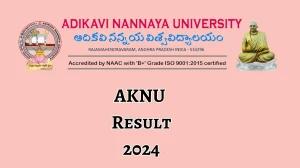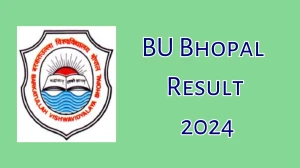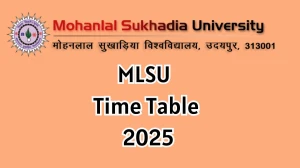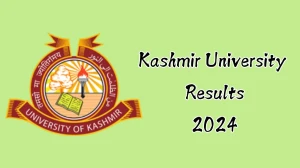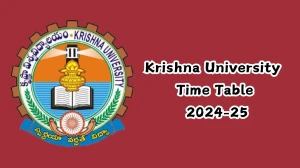- Rojgarlive »
- Education »
- TJEE Syllabus 2024 at tbjee.nic.in Download Pdf TJEE Syllabus
TJEE Syllabus 2024 at tbjee.nic.in Download Pdf TJEE Syllabus
by Sangeetha
Updated Apr 19, 2024
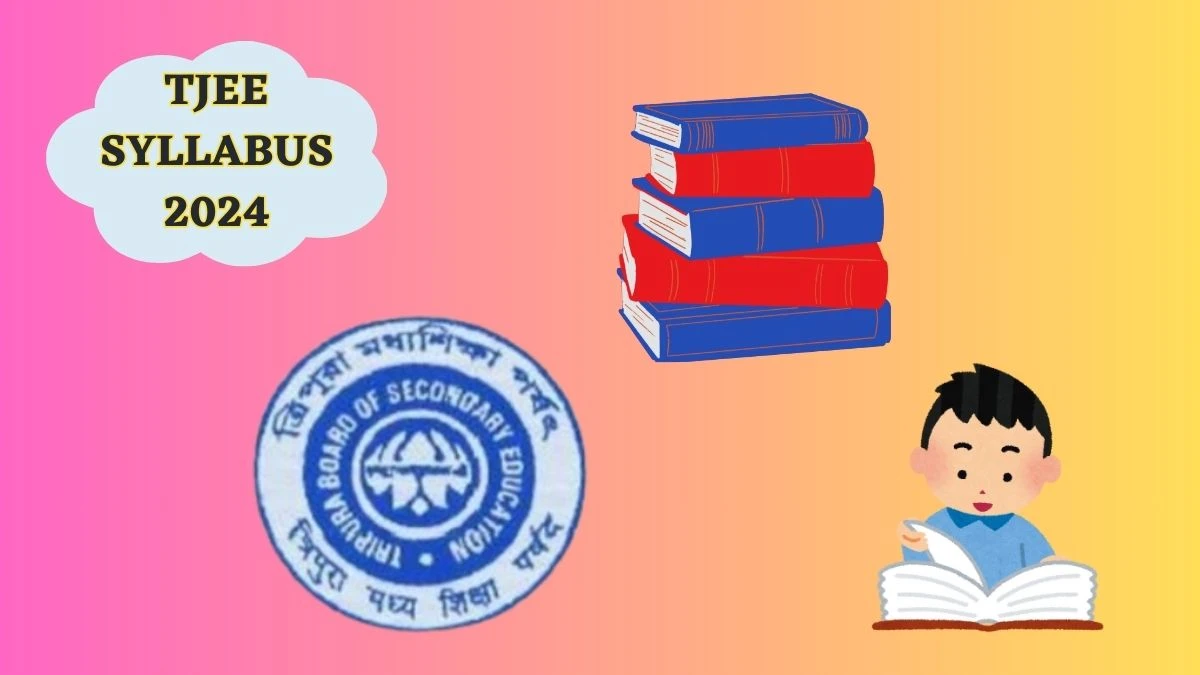
TJEE Syllabus 2024 @ tbjee.nic.in Download Topic Wise TJEE Syllabus
TJEE 2024 Syllabus Update: TBJEE has published the TJEE 2024 syllabus in 10 modules for each subject on the website at tbjee.nic.in. The syllabus for TJEE 2024 includes topics from Physics, Chemistry, and Mathematics.
Students need to focus on the TJEE 2024 biology syllabus and TJEE 2024 chemistry syllabus as they play a significant role in scoring higher marks. Candidates should thoroughly review and understand these syllabi to effectively plan their preparation for the Tripura JEE exam.
Check - TJEE Syllabus 2024
TJEE Physics Syllabus 2024
|
Module |
Topics |
|
MODULE – 1 |
Physics: Scope and excitement; nature of physical laws; Physics, technology and society. Need for measurement: Units of measurement; systems of units; SI units, fundamental and derived units. Length, mass and time measurements; Accuracy and precision of measuring instruments; errors in measurement; significant figures Dimensions of physical quantities, dimensional analysis and its applications Frame of reference (inertial and non-inertial frames), Motion in a straight line; Position-time graph, speed and velocity Uniform and non-uniform motion, average speed and instantaneous velocity, uniformly accelerated motion, velocity-time and position-time graphs, for uniformly accelerated motion (graphical treatment), Elementary concepts of differentiation and integration for describing motion Scalar and vector quantities: Position and displacement vectors, equality of vectors, multiplication of vectors by a real number; addition and subtraction of vectors, Unit vector, Zero Vector, Resolution of a vector in a plane, Scalar and Vector products of Vectors, Relative velocity Motion in a plane, Cases of uniform velocity and uniform acceleration, projectile motion, Uniform circular motion |
|
MODULE – 2 |
Force and inertia, Newton’s first law of motion; momentum and Newton’s second law of motion; impulse; Newton’s third law of motion, Law of conservation of linear momentum and its applications, Problems using free body diagrams Equilibrium of concurrent forces, Static and Kinetic friction, laws of friction, rolling friction Dynamics of uniform circular motion, Centripetal force, examples of circular motion (vehicle on level circular road, vehicle on banked road) Work done by a constant force and a variable force; kinetic and potential energies, work energy theorem, power Potential energy of a spring, conservation of mechanical energy, conservative and nonconservative forces; Elastic and inelastic collisions in one and two dimensions, motion in a vertical circle Centre of mass of a two-particle system, Centre of mass of a rigid body, momentum conservation and motion of centre of mass, centre of mass in some symmetric bodies. Basic concepts of rotational motion; moment of a force, torque, angular momentum, conservation of angular momentum and its applications; moment of inertia, radius of gyration, Values of moments of inertia for simple geometrical objects, parallel and perpendicular axes theorems and their applications to some problems, Equilibrium of rigid bodies, rigid body rotation, equations of rotational motion |
|
MODULE – 3 |
Kepler’s laws of planetary motion, the universal law of gravitation Acceleration due to gravity and its variation with altitude, depth and rotation of earth Gravitational potential energy; gravitational potential, escape speed Orbital velocity, time period and mechanical energy of an artificial satellite, Geo-stationary satellites Elastic behavior, Stress-strain relationship, Hooke’s law, Young modulus, bulk modulus, modulus of rigidity, poison’s ratio; elastic strain energy Pressure due to a fluid column; Pascal’s law and its applications (hydraulic lift and hydraulic brakes), Effect of gravity on fluid pressure Viscosity, Newton’s law of viscous force, coefficient of viscosity, Stoke’s law, terminal velocity, Reynold’s number, streamline and Turbulent flow, Critical velocity, Bernoulli’s theorem and its applications. Idea of cohesive and adhesive forces, Surface energy and surface tension, angle of contact, excess Pressure for liquid drop, liquid bubble and air bubble, capillary rise |
|
MODULE – 4 |
Heat, temperature, thermal expansion; thermal expansion of solids, liquids, and gases, anomalous expansion of water and its effect, specific heat capacity at constant pressure and constant volume and their inter-relation, Calorimetry, change of state – idea of latent heat Heat transfer- conduction and thermal conductivity, convection and radiation, Qualitative ideas of Black Body Radiation, absorptive and emissive powers, Kirchhoff’s law, Wien’s displacement law, Newton’s law of cooling and Stefan’s law, GreenHouse effect Thermal equilibrium and definition of temperature (Zeroth law of Thermodynamics), Heat, work and internal energy First law of thermodynamics, various thermodynamic processes viz. isothermal, adiabatic, isobaric, isochoric processes, work done in thermodynamic process (both isothermal and adiabatic) Second law of thermodynamics, Reversible and irreversible processes, Idea of heat engine, Carnot’s engine and its efficiency Ideal gas laws, equation of state of a perfect gas, Assumptions of kinetic theory of gases, the concept of pressure, r. m. s. speed of gas molecules, Kinetic energy and temperature; degrees of freedom, law of equipartition of energy (statement only) and application to specific heat capacities of gases; concept of mean free path, Avogadro’s number |
|
MODULE – 5 |
Periodic motion - period, frequency, displacement as a function of time, Periodic functions, Simple harmonic motion (S.H.M.) and its equation; phase; mechanical energy in S.H.M., Simple pendulum - expression for its time period; oscillations of a spring -restoring force and force constant; some other examples of SHM Free, forced and damped oscillations (quantitative ideas only), simple examples, resonance Wave motion, Longitudinal and transverse waves, speed of a wave, Expression for displacement of a plane progressive wave, relation between particle and wave velocity, Principle of superposition of waves, reflection of waves, Standing waves in strings and organ pipes, fundamental mode and harmonics, Beats, Doppler effect in sound |
TJEE Chemistry Syllabus 2024
|
Modules |
Topics |
|
MODULE – 1 |
Some Basic Concepts of Chemistry General Introduction: Importance and scope of Chemistry. Historical approach to particulate nature of matter, laws of chemical combination. Dalton’s atomic theory: concept of elements, atoms and molecules.Atomic and molecular masses, Mole concept and molar mass; percentage composition, empirical and molecular formula; chemical reactions, stoichiometry and calculations based on stoichiometry. |
|
Structure of Atom: Discovery of electron, proton and neutron; atomic number; isotopes and isobars. Rutherford’s model and its limitations. Bohr’s model and its limitations, concept of shells and sub-shells, dual nature of matter and light. de Broglie’s relationship.Heisenberg uncertainty principle, concept of orbitals, quantum numbers, shapes of s, p and d orbitals, rules for filling electrons in orbitals - Aufbau principle, Pauli exclusion principle and Hund’s rule, electronic configuration of atoms, stability of half-filled and filled orbitals. |
|
|
Classification of Elements and Periodicity in Properties: Significance of classification, a brief history of the development of periodic table.Modern periodic law and the present form of periodic table, periodic trends in properties of elements- atomic radii, ionic radii. Ionization enthalpy, electron gain enthalpy, electronegativity, valence, Nomenclature of elements with atomic number greater than 100. |
|
|
MODULE – 2 |
Chemical Bonding and Molecular Structure: Valence electrons, ionic bond, bond parameters, covalent bond: Born Haber Cycle. Lewis structure, polar character of covalent bond, covalent character of ionic-bond, valence bond theory, resonance, geometry of covalent molecules, VSEPR theory, concept of hybridization, involving s, p and d- orbitals and shapes of some simple molecules, molecular orbital theory of homonuclear diatomic molecules and hydrogen bond. |
|
Chemical Thermodynamics Concepts of System, types of systems, surroundings, Work, heat, energy, extensive and intensive properties, state functions. First law of thermodynamics-internal energy change (ΔU) and enthalpy change (ΔH), Hess’s law of constant heat summation, enthalpy of; bond dissociation, Combustion, formation, atomization, sublimation, phase transformation, ionization, and solution. Introduction of entropy as a state function, Gibbs energy change for spontaneous and non-spontaneous processes, criteria for equilibrium. Second and third laws of thermodynamics. |
|
|
Chemical Kinetics Rate of reaction (average and instantaneous), factors affecting rates of reaction; concentration, temperature, catalyst; order and molecularity of a reaction; rate law and specific rate constant, integrated rate equations and half-life (only for zero and first order reactions); concept of collision theory (elementary idea, no mathematical treatment), activation energy, Arrhenius equation. |
|
|
MODULE – 3 |
States of Matter: Gases and Liquids: Three states of matter, Intermolecular interactions, types of bonding, melting and boiling points, Role of gas laws in elucidating the concept of the molecule, Boyle’s law. Charles’ law, Gay Lussac’s law, Avogadro’s law. Ideal behaviour, empirical derivation of gas equation, Avogadro’s number. Ideal gas equation, Derivation from ideal behaviour, liquefaction of gases, critical temperature, kinetic energy and molecular speeds (elementary ideal). Liquid State : Vapour pressure, viscosity and surface tension (qualitative idea only, No mathematical derivations) |
|
Equilibrium Equilibrium in physical and chemical processes, dynamic nature of equilibrium, Law of mass action, equilibrium constant, factors affecting equilibrium -Le Chatelier’s principle; ionic equilibrium - ionization of acids and bases, strong and weak electrolytes, degree of ionization, ionization of polybasic acids, acid strength, concept of pH Henderson Equation, hydrolysis of salts (elementary idea). Buffer solutions, solubility product, common ion effect (with illustrative examples). |
|
|
Solid State Classification of solids based on different bindings forces: molecular, ionic, covalent and metallic solids, amorphous and crystalline solids (elementary idea), unit cell in two dimensional and three dimensional lattices, packing efficiency, calculation of density of unit cell, packing in solids, voids, number of atoms per unit cell in a cubic unit cell,point defects, electrical and magnetic properties. Band theory of metals conductors,semiconductors and insulators and n- & p-type semiconductors. |
|
|
MODULE – 4 |
Redox Reactions Concept of oxidation and reduction, redox reactions, oxidation number, balancing redox reactions in terms of loss and gain of electrons and change in oxidation numbers. |
|
Solutions Types of solutions, expression of concentration of solutions of solids in liquids, solubility of gases in liquids, solid solutions, colligative properties – relative lowering of vapour pressure, Raoult’s law, elevation of boiling point, depression of freezing point, osmot pressure determination of molecular masses using colligative properties, abnormal molecular mass, van’t Hoff factor and calculations involving it. |
|
|
Electrochemistry Redox reactions, conductance in electrolytic solutions, specific and molar conductivity, variations of conductivity with concentration, Kohlrausch’s Law, electrolysis and laws of electrolysis (elementary idea), dry cell – electrolytic cells and Galvanic cells; lead accumulator, EMF of a cell, standard electrode potential, Nernst equation and its application to chemical cells, Relation between Gibbs energy change and emf of a cell, fuel corrosion. |
|
|
Surface Chemistry Adsorption – Physisorption and chemisorption; factors affecting adsorption of gas on solids; catalysis : homogeneous and heterogeneous, activity and selectivity : enzyme catalysis; colloidal state : distinction between true solutions, colloids and suspensions; lyophilic, lyophobic, multimolecular and macromolecular colloids; properties of colloids; Tyndall effect, Brownian movement, electrophoresis, coagulation; emulsion – types of emulsions, Elementary idea of nanomaterials. |
|
|
MODULE – 5 |
Hydrogen Position of hydrogen in periodic table, occurrence, isotopes, preparation, properties and uses of hydrogen; hydrides – ionic, covalent and interstitial; physical and chemical properties of water, heavy water; hydrogen peroxide-preparation, properties, structure and use; hydrogen as a fuel. |
|
p-Block Elements General Introduction to p-Block Elements: Group 13 elements: General introduction, electronic configurations, occurrence. Variation of properties, oxidation states, trends in chemical reactivity, anomalous properties of first element of the group; Boron-physical and chemical properties, some important compounds; borax, boric acid, boron hydrides, Aluminium : reactions with acids and alkali and uses.
Group 14 elements : General introduction, electronic configurations, occurrence, variation of properties, oxidation states, trends in chemical reactivity, anomalous behavior of first element, Carbon-catenation, allotropic forms, physical and chemical properties; uses of some important compounds; oxides. Important compounds of silicon and a few uses; silicon tetrachloride, silicones, silicates and zeolites, their uses and structure of silicates.
Group 15 elements : General introduction, electronic configuration, occurrence, oxidation states, trends in physical and chemical properties, nitrogen - preparation, properties and uses; compounds of nitrogen : preparation and properties of ammonia and nitric acid, oxides of nitrogen (structure only) : Phosphorus-allotropic forms, compound of phosphorus : preparation and properties of phosphine, halides (PCl3, PCl5) and oxoacids (elementary idea only).
Group 16 elements: General introduction, electronic configuration, oxidation states, occurrence, trends in physical and chemical properties; dioxygen : preparation, properties and uses, classification of oxides, Ozone. Sulphur-allotropic forms; compound of sulphur: preparation, properties and uses of sulphur dioxide; sulphuric acid : industrial process of manufacture, properties and uses, other oxides and oxoacids of sulphur (structures only).
Group 17 elements: General introduction, electronic configuration, oxidation states, occurrence, trend in physical and chemical properties; compounds and halogens : preparation, properties and uses of chlorine and hydrochloric acid, interhalogen compounds, oxoacids of halogens (structures only).
Group 18 elements: General introduction, electronic configuration, Occurrence, trends in physical and chemical properties, uses. |
TJEE Mathematics Syllabus 2024
|
Modules |
Topics |
|
MODULE-1 |
Sets: Sets and their representations. Empty set. Finite & Infinite sets. Equal sets. Subsets of the set of real numbers especially intervals (with notations). Power set. Universal set.Venndiagrams. Operations on set, Union and intersection, Difference of sets, Complement of a set. Properties of complement sets.Simple problems on union and intersection on not more than three sets. |
|
Relations & Mapping: Ordered pairs.Cartesian product of sets.Number of elements in the Cartesian product of two finite sets. Cartesian product of the reals with itself (upto R x Rx R).Different types of relations, pictorial diagrams, domain, co-domain and range of a relation. Function as a special kind of relation from one set to another. Pictorial representation of a function, domain, co-domain & range of a function.Real valued functions of real variables, domain and range of these functions. Different types of functions.Graphs of function.Sum, difference, product and quotients of functions. |
|
|
MODULE-2 |
Sequence and Series: Arithmetic progression (A.P), arithmetic mean (A.M) Geometric progression (G.P), Geometric mean(G.M).Sum of n terms of A.P and G.P., Relation between A.M. and G.M of two real numbers. Arithmetic, Geometric and Arithmetic Geometric series. Sum to n terms of the special series Σn ,Σn 2 and Σn 3 . Infinite G.P and its sum. |
|
Complex Numbers: Complex numbers as ordered pair of reals, representation of a complex number in form of a+ ib. Polar form and conjugate of a complex number, Argand diagram, algebra of complex numbers, modulus and argument of a complex number. Square and cube root of complex numbers and their properties, triangle inequality, simple problems. |
|
|
Quadratic Equations: Its rational, irrational and complex roots, relation between roots and coefficients of a quadratic equation, nature of roots, formation of quadratic equation, symmetric functions of the roots, quadratic expressions, its maximum and minimum values. Simple applications. |
|
|
Permutations & Combinations: Fundamental theorem of counting, permutation as arrangement and combination as selection. Permutation and combination of like and unlike things. Circular permutation is to be excluded. Simple applications. |
|
|
MODULE-3 |
Binomial Theorem: Binomial theorem for positive integral indices, general and middle term, term independent of x and greatest term in binomial expansion, simple applications. |
|
Matrices and Determinant: Matrices of order ≤ 3, algebra of matrices, types of matrices, determinant up to 3rd order. Properties of determinants, evaluation of determinants, area of triangle by using determinant, Adjoint and evaluation of inverse of a square matrix using determinant and by elementary transformations test of consistency and solution of simultaneous linear equations using inverse of a matrix and determinants(Cramer’s rule). |
|
|
MODULE-4 |
Trigonometric ratios of associated angles, compound angles, multiple and submultiple angles, conditional identities, general solution of trigonometric equations, inverse circular functions, simple applications. Properties of triangles: Sine, Cosine, Tangent rules, formula for semi angels, expression for area of a triangle, circum radius. |
|
MODULE-5 |
Straight Line: Cartesian coordinate system, translation of coordinate axes, Locus of a point, Slope of a line and angle between two lines. Various forms of equations of a line: parallel to axes, point-slope form, slope-intercept form, two-point form, intercept form and normal form. General equation of a line, concurrence of three straight lines. Equation of family of lines passing through the point of intersection of two lines. Distance of a point from a line. Equation of internal and external bisectors of angles between two intersecting lines, Centroid, orthocenter, circumcentre of a triangle. |
|
Conic Sections: Standard form of equation of circle, general form of the equation of a circle, its radius and centre, equation of a circle when the end points of a diameter are given. Point of intersection of a line and a circle with the centre at origin and condition for a line to be tangent to a circle, Equation of the tangent and simple properties. |
|
|
Conics: Parabola,ellipse, hyperbola in standard form, condition for y = mx+c to be a tangent and their simple properties. |
TJEE Syllabus 2024 - FAQs
The TJEE Syllabus typically includes four subjects: Physics, Chemistry, Mathematics, and Biology. The exam pattern may vary depending on the course you are applying for. Engineering aspirants usually take Physics, Chemistry, and Mathematics, while medical aspirants take Physics, Chemistry, and Biology.
Yes, the TJEE Syllabus is generally based on the topics studied in the 10+2 (or equivalent) standard. It covers the relevant concepts and subjects taught in the Physics, Chemistry, Mathematics, and Biology curriculum of Class 11 and Class 12.
